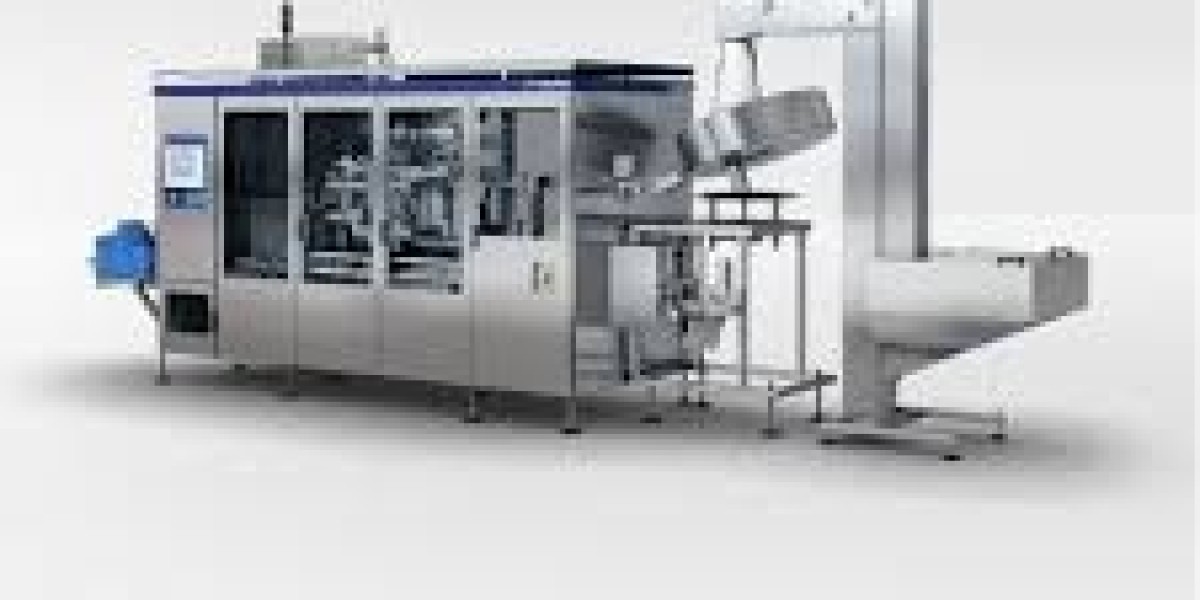The cap applicator market has grown significantly in recent years, evolving alongside advancements in automation, sustainability, and smart technology. From manual and semi-automatic machines to fully automated, AI-integrated systems, cap applicators are now pivotal components of modern packaging lines. As industries like food & beverage, pharmaceuticals, cosmetics, and chemicals expand, the need for efficient, reliable, and cost-effective capping solutions continues to rise.
What is a Cap Applicator?
A cap applicator is a device designed to automatically or semi-automatically apply caps or lids to containers, ensuring that they are sealed correctly. These machines are essential in high-volume packaging processes, where maintaining consistent product quality, speed, and efficiency is critical. Cap applicators are used in a variety of industries, including:
- Food & Beverage: Ensuring the secure sealing of jars, bottles, and cans to prevent spoilage.
- Pharmaceuticals: Capping bottles of medicine to maintain sterility and safety.
- Cosmetics: Packaging beauty products like lotions, shampoos, and perfumes in a way that ensures freshness and prevents contamination.
- Chemicals: Ensuring that hazardous materials are sealed securely to avoid leaks and spills.
The demand for cap applicators in these sectors is largely driven by increased production volumes, regulatory compliance (such as safety standards in pharmaceuticals), and consumer demand for consistent, high-quality products.
Technological Innovations in the Cap Applicator Market
Automation and Smart Capping Systems
One of the most significant drivers of the cap applicator market is the adoption of automation. As industries strive to improve operational efficiency and reduce human error, automated cap applicators have become essential. These systems are capable of processing thousands of containers per minute, offering precision, speed, and consistency. Here are some of the technological innovations transforming the market:
1. Servo-Driven Capping Machines: Servo-driven systems are increasingly popular because they offer high precision and control. These systems allow for the adjustment of torque applied during the capping process, ensuring that the caps are neither too tight nor too loose. This is particularly important in industries like pharmaceuticals and food & beverage, where over-tightening can damage containers or spoil products, and under-tightening may lead to leakage or contamination.
2. Robotics and AI Integration: The integration of robotics and Artificial Intelligence (AI) in cap applicators has further enhanced production lines. These systems can adapt to different cap sizes and container shapes automatically, without requiring manual intervention. AI-driven machines can predict maintenance needs based on real-time data, reducing downtime and improving overall efficiency.
3. IoT Connectivity: Internet of Things (IoT) technology allows for remote monitoring and diagnostics of cap applicators. Manufacturers can track the performance of their machines in real-time, analyzing data such as speed, torque, and maintenance schedules. IoT-enabled cap applicators can send alerts when components need servicing, preventing unexpected breakdowns and increasing the longevity of equipment.
4. Capping Systems with Vision Inspection: Vision inspection technology is becoming a standard feature in cap applicators. These systems use cameras and sensors to check for defective caps, misalignment, or missing caps in real-time. Vision systems can identify issues before products leave the production line, ensuring quality control and minimizing the risk of product recalls.
Market Segmentation and Application
The cap applicator market is diverse, with products tailored for various sectors. Key segments include:
1. By Technology:
- Manual Cap Applicators: Typically used for small-scale operations or low-volume production lines, these devices require human intervention to place the cap on the container before the machine tightens it.
- Semi-Automatic Cap Applicators: These machines are more efficient than manual applicators, offering automation to apply caps while still requiring some operator intervention for setup and loading.
- Fully Automatic Cap Applicators: Fully automated machines are capable of applying caps to containers without human intervention. These systems are used for high-volume production lines and can be integrated with other machinery such as conveyors, labeling machines, and palletizers.
2. By Application:
- Food & Beverage: Cap applicators are essential in sealing products like sauces, beverages, jams, and bottled water. The demand for these systems is growing as packaged food production ramps up to meet the needs of a globalized and fast-paced consumer market.
- Pharmaceuticals: In the pharmaceutical industry, cap applicators ensure the safe sealing of bottles containing pills, liquids, and syrups. The need for tamper-evident packaging is especially critical in this sector to maintain product integrity and meet stringent regulatory standards.
- Cosmetics: The cosmetic industry also relies heavily on cap applicators, particularly for products like shampoos, body lotions, and skincare creams. Packaging that maintains freshness and meets aesthetic standards is important in this sector.
- Chemicals & Industrial: In the chemicals industry, cap applicators must handle various types of hazardous materials, ensuring tight seals to prevent leaks or contamination.
Challenges and Opportunities in the Cap Applicator Market
Challenges
1. High Initial Investment Costs: Advanced, automated cap applicators come with a high price tag. While they promise long-term efficiency gains, the initial investment required for these systems can be a barrier for smaller companies, especially those operating in niche markets.
2. Complexity of Maintenance: As machines become more advanced and incorporate robotics and AI, maintenance becomes more complex and requires specialized skills. Companies must invest in training or third-party service providers to ensure that their machines continue to operate smoothly.
3. Adapting to Changing Consumer Preferences: With growing interest in sustainable and eco-friendly packaging, cap applicator manufacturers must innovate to accommodate new materials, such as biodegradable plastics or lightweight aluminum. This requires constant research and development to ensure that cap applicators remain compatible with new packaging trends.
Opportunities
1. Emerging Markets: As economies in regions like Asia-Pacific, Latin America, and the Middle East continue to develop, the demand for packaged goods is increasing, presenting a significant opportunity for cap applicator manufacturers. These regions are expected to witness rapid industrialization, creating a higher need for automated packaging solutions.
2. Sustainability Trends: Eco-friendly packaging solutions are becoming a key consumer demand. Cap applicators that can handle recyclable, reusable, or biodegradable caps and packaging materials are expected to see increased adoption. As environmental concerns continue to grow, sustainable packaging practices will drive the demand for cap applicators that support these initiatives.
3. Customization of Packaging: With the rise of personalized and custom packaging, manufacturers are looking for cap applicators that can handle smaller runs of different-sized containers and caps. Flexible systems capable of adjusting to varying production needs will be in high demand.
The Future of the Cap Applicator Market
The future of the cap applicator market appears bright, with numerous opportunities for growth driven by advancements in automation, AI, and sustainability. As packaging lines become increasingly automated and integrated with Industry 4.0 technologies, cap applicators will continue to evolve, offering faster speeds, greater precision, and enhanced capabilities. Additionally, as environmental sustainability becomes a top priority, the market will see increased demand for cap applicators that can handle recyclable and biodegradable materials without sacrificing efficiency.
Manufacturers that stay ahead of these trends—investing in cutting-edge technology, maintaining flexibility in production, and addressing consumer demands for eco-friendly packaging—will thrive in the coming years. With its diverse applications and technological innovations, the cap applicator market is set to remain a critical part of modern manufacturing processes across multiple industries.











